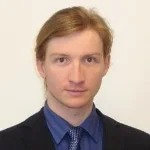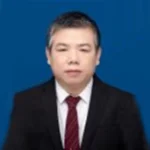Mathematical Models in Engineering (MME) ISSN (Print) 2351-5279, ISSN (Online) 2424-4627 publishes mathematical results which have relevance to engineering science and technology. Formal descriptions of mathematical models related to engineering problems, as well as results related to engineering applications are equally encouraged. Applications of mathematical models in financial engineering, mechanical and aerospace engineering, bioengineering, chemical engineering, computer engineering, electrical engineering, industrial engineering and manufacturing systems, nonlinear science and technology are especially encouraged. Mathematical models of interest include, but are not limited to, ordinary and partial differential equations, nonlinear analysis, stochastic processes, calculus of variations, operations research.
Established in 2015 and published 4 times a year (quarterly). https://doi.org/10.21595/mme
Articles
Editorial board








All of Extrica's content is archived in Martynas Mazvydas National Library of Lithuania, which provides permanent archiving for electronic scholarly journals.
What is a Mathematical Model in Engineering as a Field of Research?
Mathematical Models in Engineering (MME) is a dynamic field of research that explores the application of mathematical principles to engineer solutions for complex real-world problems. In essence, it involves the development and analysis of mathematical representations that simulate, describe, or predict behaviors within engineering systems.
Types of Mathematical Modeling:
- Ordinary and Partial Differential Equations (ODEs/PDEs): These are fundamental tools in mathematical modeling, describing how quantities change with respect to one or more variables. ODEs model systems with one independent variable, while PDEs extend to multiple variables.
- Nonlinear Analysis: Focuses on systems where the relationship between variables is not linear. Nonlinear models are essential for capturing more intricate and realistic behaviors in engineering phenomena.
- Stochastic Processes: Introduces randomness into mathematical models, acknowledging uncertainties in real-world systems. This is crucial in fields like financial engineering where uncertainty plays a significant role.
- Calculus of Variations: Examines how a functional (an integral) changes in response to variations in its inputs. This is valuable in optimizing engineering designs.
- Operations Research: Applies mathematical models to decision-making and optimization problems. It aids in resource allocation, scheduling, and logistics.
How Can Mathematical Modeling Be Applied to Real-World Problems?
- Predictive Analysis: Mathematical models allow engineers to predict the behavior of a system under different conditions before implementation. This is critical for designing and optimizing systems without the need for costly physical prototypes.
- Optimization: Mathematical models are used to find the best possible solutions to engineering problems. This is crucial in resource allocation, process design, and system performance enhancement.
- Risk Assessment: Incorporating stochastic models helps in assessing and managing risks associated with uncertainty, crucial in fields like finance, environmental engineering, and system reliability analysis.
- Decision Support: Operations research models provide a structured approach to decision-making, aiding engineers in making informed choices and optimizing processes.
Why Do We Need Mathematical Models for Engineering Problems?
- Complexity Handling: Real-world engineering problems are often too complex to be fully understood through intuition alone. Mathematical models provide a systematic and rigorous framework for understanding, analyzing, and solving these complex issues.
- Resource Efficiency: Developing and testing physical prototypes can be time-consuming and expensive. Mathematical models enable engineers to simulate and optimize systems in a cost-effective manner before physical implementation.
- Informed Decision-Making: By quantifying relationships and dependencies, mathematical models provide a basis for informed decision-making, reducing the risk of errors and inefficiencies in engineering projects.
- Innovation and Advancement: Mathematical modeling fosters innovation by providing a platform for exploring new ideas, theories, and approaches to engineering challenges, leading to advancements in technology and science.
In summary, Mathematical Models in Engineering play a crucial role in understanding, predicting, and optimizing complex systems, offering a powerful toolkit for researchers and practitioners in various engineering disciplines.

















